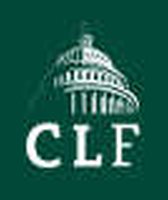Get PolitiFact in your inbox.
At a campaign-style rally in Tampa, President Donald Trump threw his support behind Republican Congressman Ron DeSantis’ bid to take the Florida governor’s mansion.
DeSantis faces Agriculture Commissioner Adam Putnam in the Aug. 28 Republican primary. Multiple Democrats are also competing in a primary to succeed term-limited Republican Gov. Rick Scott, who is challenging Florida’s only statewide elected Democrat, U.S. Sen. Bill Nelson.
Trump offered kind words for DeSantis and Scott, while he knocked Nelson for supporting the Affordable Care Act and for, in Trump’s view, putting "criminal aliens over American citizens."
During the rally, Trump made several statements — many misleading or flat-out wrong — about Republican tax cuts, his popularity, progress on the U.S. border wall with Mexico, and trade. Here’s our rundown (with a bit about what he got right at the end).
"They just came out with a poll, did you hear? The most popular person (in) the history of the Republican party is Trump! ... So I said, does that include Honest Abe Lincoln?"
To his credit, Trump is very popular among Republicans: His approval rating within his own party has ranged from 84 percent to 90 percent since mid April 2018. The latest Gallup data shows Trump currently enjoys an 87 percent approval rating from Republicans.
However, his claim is misleading on two grounds.
First, scientific opinion polls were first designed and deployed in 1935. That’s 70 years after Honest Abe’s assassination, so Trump’s name-check of Lincoln is spurious.
Second, as we noted in a previous fact-check, Trump’s approval rating at this point in his presidency ranks roughly in the middle of the post-World War II Republican presidents. Using alternative measurements — including his highest rating during his entire tenure — his support among Republicans was actually worse than every post-war Republican president except for Gerald Ford.
"In some states, Democrats are even trying to give illegal immigrants the right to vote."
Giving undocumented immigrants the right to vote has been limited to some municipal elections. The right does not extend to federal office, by law.
Currently no states allow non-citizens to vote in state elections. There are a handful of localities that allow it for local elections or even more specifically school board elections, including San Francisco, Chicago (school board), and a handful of Maryland cities, said University of Kentucky law professor Joshua A. Douglas.
A few cities in Massachusetts have passed or are debating local laws to allow non-citizens to vote in local or school board elections. But Massachusetts law requires the state Legislature to approve these local expansions of the right to vote.
Starting in the 2018 November elections, non-citizens in San Francisco will be allowed to vote for board of education members. Takoma Park, Md., in 1992 adopted a measure permitting non-citizens to vote in city elections.
The Illegal Immigration Reform and Immigrant Responsibility Act of 1996 states it’s unlawful for noncitizens to vote for candidates seeking federal offices, such as the presidency or a seat in Congress. But it’s not illegal for noncitizens to vote for local offices if it’s allowed by a state constitution, statute or local ordinance.
"By the way, outside, if you want to go, we set up for the first time a tremendous movie screen, because we have thousands and thousands of people outside that couldn’t get in."
Trump’s claim is not true, per a reporter stationed outside the venue.
According to the Tampa Bay Times, "There were no massive TV screens and no JumboTrons outside of the Trump rally in Tampa on Tuesday, like President Donald Trump said there was."
The president’s claim that there were "thousands and thousands of people outside that couldn’t get in" also appears to exaggerate things. The Times placed the figure in the hundreds. It also noted the presence of some "150 protesters and counter protesters."
"We’ve taken the toughest ever actions in response to China’s abusive trade practices. ... This has been too many years of abuse. $500 billion a year, $500 billion."
Trump overstated the United States’ trade deficit with China — by no small sum.
A country’s trade balance is the difference between the value of its imports and exports. When imports outstrip exports, a trade deficit results.
In 2017, the value of Chinese goods imported to the United States exceeded American goods exports to China by roughly $375 billion. Over that same period, the United States actually ran a $38.5 billion surplus on services trade with China.
Overall, in terms of both goods and services, the United States trade deficit with China in 2017 was around $336 billion. So Trump is off by roughly $164 billion.
"We've already started the wall. We've got $1.6 billion and we've started large portions of the wall."
It is misleading to state that the work has already started on the type of wall he promised during the campaign.
Trump has secured $1.57 billion for barriers along the southwest border — advancing his promise to secure the border but falling significantly short of his desired $25 billion for a promised border wall.
The $1.6 billion authorized by Congress allows for the replacement of the old fencing, but not for the construction of any sort of concrete wall prototype as Trump requested.
The projects underway include arrays of steel posts, between 18 and 30 feet high, that allow border patrol agents to see through. The planning for at least some of these projects, which will replace shorter scrap metal fencing, started long before Trump ran for office. Congress agreed to pay for them under Trump’s administration.
"Every day, the brave men and women of ICE are liberating communities and towns from savage gangs, like MS-13, that are occupying our country like another nation would."
Trump’s far-reaching assertion lacks evidence.
The use of "liberating" suggests that communities had been under the rule or full control of the MS-13 gang. But neither the White House or ICE have named such towns. Experts on sociology and gang research have told PolitiFact they were unaware of U.S. towns that have been wholly controlled by the gang. They said Trump’s wording sounded like politically charged hyperbole.
MS-13 targets immigrant communities and has a large presence in New York, Virginia, and the Washington, D.C., metropolitan area. ICE investigators have arrested hundreds of MS-13 gang members.
Trump said that prior to a June 2017 law, "if somebody treated our veterans badly ... we couldn't do anything about it. ... Now you can say you're fired."
Trump’s claim greatly exaggerates the impact of the Veterans Affairs Accountability and Whistleblower Protection Act, a bipartisan bill he signed into law in June 2017.
The measure is designed to make it easier to fire underperforming workers at the Department of Veterans Affairs. It created new protections to shield whistleblowers from retaliation, and quickens the process for removing problem employees.
But the notion that it was impossible to fire VA workers prior to the legislation is simply wrong.
An analysis of federal government employment data by our friends at FactCheck.org found a 27 percent increase in the number of firings after the law’s passage. However, that analysis also showed that the VA fired an average of 2,300 employees annually prior to Trump taking office.
"We passed the biggest tax cuts and reform in American history. Biggest cuts in history."
There’s no question that the tax bill Trump signed is a significant piece of legislation. But even by estimates most favorable to the president, we found the Trump tax cut is exceeded in size by other historical examples.
In inflation-adjusted dollars, the recent tax bill is the fourth-largest since 1940. And as a percentage of GDP, it ranks seventh.
"You know if you go out and you want to buy groceries you need a picture on a card -- you need ID. … In this country, the only time you don’t need it, in many cases, is when you want to vote for a president, when you want to vote for a senator, when you want to vote for a governor or a congressman."
Trump used the example of buying groceries to call for mandatory voter ID at the polls. But the scenario is an exaggeration.
A photo ID isn’t necessary to buy food at a grocery store with cash, but retailers can ask to see a photo ID when customers purchase items with a credit card. Laws also require retailers to ask to see ID when customers purchase certain items such as alcohol or cigarettes which are available at many grocery stores.
According to the National Conference of State Legislatures, a total of 34 states have laws requesting or requiring voters to show some form of identification at the polls, all of which are in force as of May 2018. Seventeen states ask for a photo ID such as a driver’s license or other forms of ID such as a state-issued identification card while the other 17 states accept non-photo IDs.
The remaining 16 states use other methods to verify the identity of voters such as a signature.
Proponents of voter ID say it helps prevent voter impersonation at the polls while opponents say this type of fraud is rare.
Some of Trump’s talking points were accurate:
-
Gross domestic product grew by 4.1 percent last quarter.
-
Roughly 3.7 million jobs have been added since Trump’s election in November 2016.
-
Hispanic unemployment rates are at an historic low.
-
African-American and Asian unemployment rates reached their lowest levels in May 2018, though both rates have gone back up slightly since then.
-
The United States is a net exporter of natural gas for the first time in 50 years.
-
More than 100 utilities cut their rates after the tax bill passed.
-
The United States is in the longest positive job growth streak in history. (The streak that started under President Barack Obama’s watch.)
CORRECTION: An inaccurate statement about College Park, Md., and non-citizens voting in local elections has been removed from this story.
(This story was updated through early Wednesday.)
Our Sources
See individual fact-checks for sources.
New York Times, "Maryland City May Let Noncitizens Vote, a Proposal With Precedent," Aug. 9, 2017
National Conference of State Legislatures, Voting by nonresidents, June 20, 2018
Associated Press, "North Dakota measure would bar noncitizen voting," July 6, 2018
Interview, Joshua A. Douglas, University of Kentucky law professor, July 31, 2018
National Conference of State Legislatures, Voter Identification Requirements, May 15, 2018







































